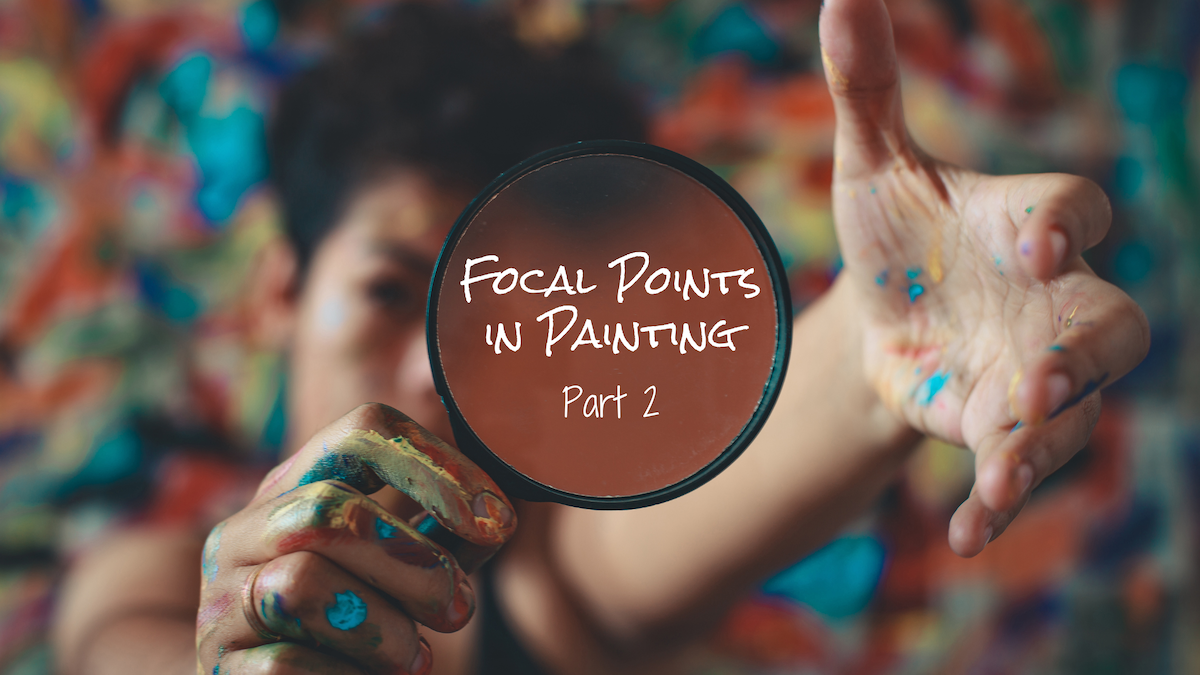In the last lesson we covered WHY to use focal points in your art, and what they are. In this lesson we cover the HOW.
Tips for Creating Focal Points:
- Choose a Main Subject: The first step in creating a focal point is to choose a main subject for your painting. This can be a person, object, or landscape, but it should be the most important element in the painting. It can also be the action in a narrative. (See tips #6 & 7 about humans.)
- Use Color: Color is a powerful tool for creating focal points. You can make your main subject stand out by giving it a different color from the rest of the painting. For example, you could make the main subject a bright color and the background a neutral color. Warm colors advance, while cool colors recede. You could have a fight on your hands trying to make a cool focal point in a warm painting.
- Use Contrast: One of the best ways to create a focal point is to use high contrast in that area. This can be achieved through contrasting colors, values, or shapes. For example, you could make your main subject dark against a light background, or you could use a round shape against a background of angular shapes. Your viewer’s eye will go to the highest contrast in value first.
- Play with Size: You can also create a focal point by playing with size. You can make your main subject larger than the other elements in the painting, or you can make it smaller and give it a more dramatic effect.
- Lead the Viewer’s Eye: Once you have created your focal point, it’s important to lead the viewer’s eye to it. You can do this by using lines, shapes, and color to draw the viewer’s gaze towards the focal point.
- Humans: When we add people to a painting, our viewer will look at them first. It is practically magnetic. Perhaps it is an ancient survival instinct. Who is this person? What are they up to? If we have a landscape and a person in it, we would be very hard pressed to NOT have the human as the focal point.
- Eyes: If our humans in the picture have eyes that are visible, our viewer’s attention will focus in on that. And then, on just one eye. Next, our viewer will look at what the subject is looking towards.
Creating a focal point can add interest, balance, and structure to your artwork. By following these tips and practicing different techniques, you can create compelling and visually interesting paintings that draw the viewer’s eye. So, start experimenting with focal points in your own paintings, and see how they can transform your artwork!

